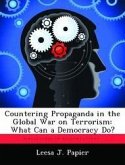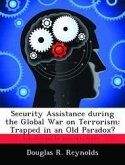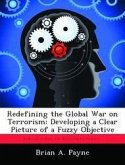The current US-led global war against radical Islamic terrorist elements focuses on the direct approach of physically eliminating terrorist cells, depriving them of safe haven and cutting off their sources of financial funding. There is an urgent need to formulate a broader plan that would stop radical Islamic groups such as al Qaeda from subverting the Muslim population worldwide and inciting hatred against the western ideals of civil liberty, democracy, modernity and progressive thinking. This paper proposes that the United States and its allies should, in parallel with the above direct approach, adopt an indirect approach of waging an information campaign to win the hearts, minds and souls of the international Muslim community. This information campaign would have two main thrusts: first, to undertake reform in Islamic education; second, to establish Iraq and Afghanistan as positive models of Islamic states. These main thrusts will address the issue of Islam's compatibility with modernity and democracy respectively. The paper begins with a discussion on the characteristics of Islam, the nature of this war on terrorism as well as the emerging trends and considerations in the post-Cold War strategic environment, within which the US policy makers are operating. This is followed by an elaboration on the proposed approach. Finally, the paper concludes by drawing a parallel with relevant lessons learned from the Cold War.
Hinweis: Dieser Artikel kann nur an eine deutsche Lieferadresse ausgeliefert werden.
Hinweis: Dieser Artikel kann nur an eine deutsche Lieferadresse ausgeliefert werden.








